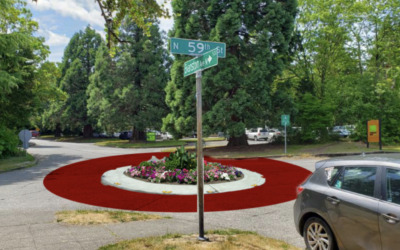Sponsored post by UW Medicine.
Despite our dreary climate, skin cancer in Washington is more common than you think
As Pacific Northwesterners, we know it rains all the time and sun is a rarity reserved for the summer months. But all those storm clouds don’t protect us from the possibility of skin cancer. Did you know Washington has more incidences of skin cancer than sunny states like California and Arizona?
Unfortunately, that increased risk includes melanoma, the most serious form of skin cancer and the type likeliest to spread if it isn’t caught early. And melanoma is on the rise—not just in Washington, but throughout the country.
The good news? “We’re diagnosing people earlier,” said Dr. Michi Shinohara, a UW Medicine dermatologist who specializes in dermatologic oncology.
Melanomas can show up anywhere on your skin, even areas that aren’t commonly exposed to sun. They are often larger, asymmetrical, have uneven edges, or aren’t evenly pigmented.
“We call them ugly ducklings because they stand out,” Shinohara said. “If you have a mole or spot on your skin that looks different from the others, visit your doctor.”
People who are older or have a family history of skin cancer are at greater risk. UV therapy to treat skin conditions like psoriasis or skin lymphoma can also increase risk. If you’ve had skin cancer before, you’re more likely to get it again.
Melanoma is rarer, but serious. The most common forms of skin cancer—basal cell carcinoma and squamous cell carcinoma—are generally slow growing and curable.
Skin cancer is “relatively easy to prevent,” Shinohara said. Her tips:
• Use sunscreen that’s SPF 30 or higher and broad spectrum, blocking both UVA and UVB rays. Ultimately, though, any sunscreen is better than none. “The best sunscreen is the one you use,” Shinohara said.
• Reapply sunscreen regularly, especially if you’re swimming or sweating.
• It takes about two tablespoons of sunscreen to sufficiently protect your entire body.
• Even better, wear dark-colored clothing that covers your skin and has a tighter weave. Don’t forget sunglasses!
• If you have very pale skin or burn easily, you’ll need to use more sunscreen and reapply more often.
• If your skin is darker, still wear sunscreen. More pigment in your skin does provide some sun protection, but no one is immune to skin cancer.
• Try to avoid exposure between 10 a.m. and 4 p.m. when the sun is most intense.
• Don’t pre-tan (or tan at all). It won’t protect your skin or lower your risk for skin cancer. Any kind of tanning permanently damages your skin.
Ultimately, the best course of action is to wear sunscreen whenever you spend time outside, even if it’s cloudy or cooler. Bring extra sunscreen with you if you’re traveling to a sunny place and store extra bottles in your car and at work.
“I’m not saying be vampires, but do be aware,” Shinohara said. “We can’t undo damage from sun.”
If you notice a new or changing spot on your skin, visit a UW Medicine primary care provider to get it checked out.





